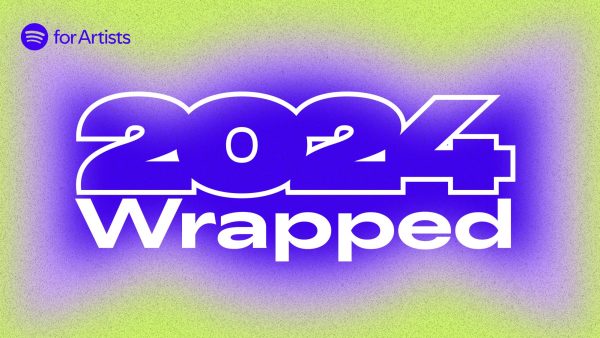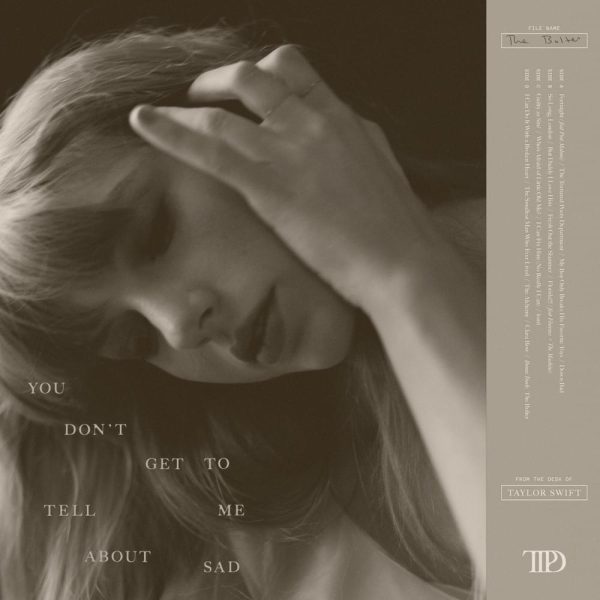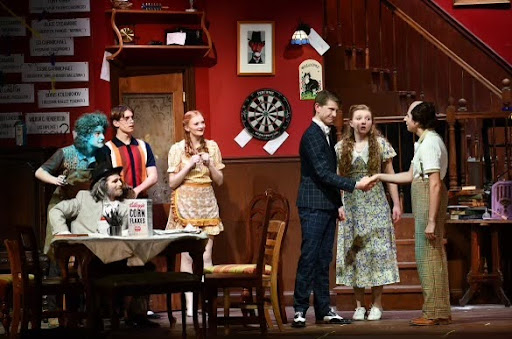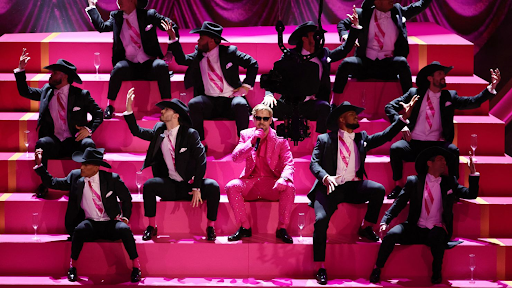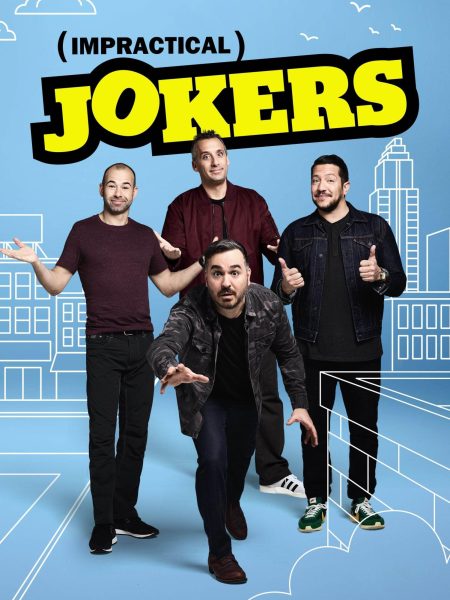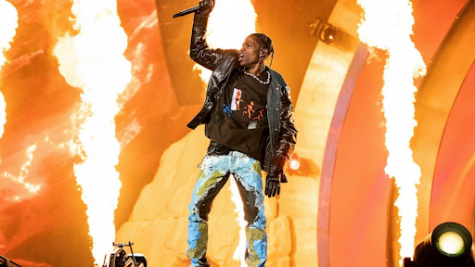An Interview With Anne Wyszomierski-Lackner
Anne Wyszomierski-Lackner is a Manhasset Secondary School alumna who majored in fine arts at the University of Delaware. After college, she pursued a very successful career in fashion and you might have seen her sweaters on the cover of Sundance magazine. Starting February 26th, her work will be on display at Manhasset’s very own Gallery of Fine Art, located inside Manhasset High School, across from the high school entrance. The following is an interview conducted with her before the installation of the new exhibit.
- What inspired you to become a fashion designer?
I did not know I wanted to be a fashion designer until I went on my first internship at Macy’s Merchandising Group. I interned at two places my junior year of college, summer going into senior year. I interned at an art gallery and at Macy’s. I thought for sure I knew that I wanted to work at an art gallery and I ended up hating it. I loved Macy’s Merchandising Group. It was so much fun. Really from that experience, I knew I wanted to go into fashion. So really, do things you think you might not like. I really didn’t want to do it, and I did it, and I’m really glad I did.
- What is your creative process like when designing a piece?
There’s a lot of different types of inspiration that we pull from. We’ve used inspiration from designs on wallpaper to antique embroidery designs from the 20s. Really from anything around us. I know we’ve used nature inspired prints. I mean, we really get the inspiration from everywhere, but it’s pulling from that that you have to figure out the body. Where it’s going to go, how it’s going to work, all that kind of stuff. It’s a real process of elimination. So, from many designs, you have to whittle it down to one.
- What other styles of design and art have influenced your work?
That’s a hard question because there’s so many different kinds of artwork. It’s hard to define just one. Personally, I just like vintage pieces. I am a fan of embroidery, so anything from tapestry work to lace work on wedding dresses, all that kind of stuff. I love beading and embellishments. Also, I love costume wear, that’s a lot of fun. I love looking at that and trying to incorporate that into everyday wear. I really like beading.
- How would you say your art education at Manhasset High School has helped you in your career?
It really provided the foundation to all of my artwork curriculum in the future. Proportion, I learned proportion in life drawing, for sure, which has helped greatly with measurements of the body; you have to know all that kind of stuff. The basis of color and color theory, we learned at the very beginning. Even though it’s painting, on the tiniest scale, you see color and how that affects everything. So all of that kind of stuff. Patience, and learning how to start over was a big deal. I remember Mr. Sansone would always tell us to throw out our work and start over, that was a hard one because I wanted to hold onto everything, but in fashion, you’re sketching all day long and illustrating. You might love something but the buyer might hate it, so you’re really tossing out things on a daily basis. So I really learned that early on from art in high school.
- How would you say your college major (fine arts) has helped your career?
It was just a more in-depth process of what Mr. Sansone taught me in high school. It was hours a day, constant out of the box thinking. I had started in graphic design and I didn’t really like it, so I switched back to fine arts and that was a big change, because you think art, and what you are going to do for a job, you think graphic arts. But to do any of those careers you need foundation skills, so in college you really get in-depth. I took sculpture classes, photography, everything. All of the roads, the branches you go down, you get to take these little pieces of it. You get to pull all of these elements into whatever career you want to choose in the end.
- What type of garments do you make?
Sweaters. Women’s sweaters. I started in children’s wear, then I moved to women’s sweaters. My grandmother taught me to knit when I was very young and I’ve always just loved to make things hands-on. I just was always drawn to sewing and hands-on work. So I definitely knew I wanted to do tops. Not so much bottoms. Whatever, bottoms are boring, they’re just black, brown, and grey and that’s it. I just love sweaters. I love the different gages, the different yarn, you can print them, dye them, and embellish them. You know, yarn dyed stripes, chevron patterns, Fair Isles. There’s so many different things that you can do to manipulate a yarn to create a completely different sweater. So it’s like the possibilities are endless. The littlest thing can change it completely and I love that. Mixing yarns, adding them together, twisting them, marling them. It’s like a whole world out there. Circular knitting, all sorts of stuff. It’s a lot of fun.
- Why don’t you make men’s sweaters?
Because I can’t wear them. I mean, I guess I could wear them. When I first started, I didn’t work for a very fashion-forward menswear company. Men’s sweaters are navy, gray, green, or black. I’m sure there are people out there that would love to do an embellished men’s sweater, but I don’t think I would’ve gotten to do all of the more artsy artwork on a sweater. Like, to create a floral print is more womenswear, or even, like, teen, than menswear. It’s more structured, I feel like, menswear, and I’m not a very structured person. So that works really well. People are awesome at menswear and you could do some creative things, but I’m more of the laid-back, all over the place person.
- Do you travel a lot for work and how have your travels influenced your designs?
I actually have not traveled a lot for work, but my senior supervisors travel a lot. However, it doesn’t mean that you can’t find new pieces. There’s a lot of places in Brooklyn or Philly to go shopping, like vintage markets and all those kinds of places. Even going to the mall and window shopping, you’d be surprised at some of the things you would find in the stores you don’t go into every day. Farmer’s markets, art fairs, craft shows, that kind of stuff is awesome. There’s this one fair that I go to where they shear the sheep in front of you and the women make the yarn, they spin the yarn right there in front of you and dye it and stuff. That in itself is interesting to see how you get the product, so that was really cool.
- How does the way your work is displayed affect it?
It affects it from a purchasing standpoint. If it’s not displayed correctly it could either hurt sales or drive sales. Depending from where it’s located in the store, is it displayed on a mannequin, or is it just folded in the corner? Like, all of those things. Or is it in darkness, is it under bright lights, is it a focus speech? Usually how you display it in the store is you make the whole outfit for the customer so they don’t have to think about what to pair it with. They’re more likely to buy your sweater if they find the pants that go with it. Depending on who the customer is, you really have to think about who you’re designing for. Just because I like turtlenecks doesn’t mean some other woman does, you know? You really have to think about who your brand is, who your customer is. The other thing about displaying that I learned over the years is I work for a company that does a lot of sweaters for magazines, and in a magazine, you only ever see the front of a sweater, so really, all of the embellishments, all of the design details are usually on the front; they can’t photograph the back, that’s extra money. They’re called coffin sweaters, because when you lay in a coffin you only ever see the front of you. That’s the industry term for them. So you really have to think, money-wise, where is the money going into the design to get the most out of it.
- What was it like to work with Sundance magazine and have your garment featured on the cover for the first time?
It was awesome. It was such a great feeling knowing that something you created with your team members was in circulation for you to see. Sundance was great because they have a very strong creative team and they let you explore different types of artwork and embellishments and designs. They let you go to town basically, and they work with you as a team to try and get that perfect design. It was a lot of fun.
- What advice would you give a young person looking to break into the fashion industry or make a career out of the fine arts?
Do not be afraid to try different things. Like, just go for it. You might not even think you like photography or something like that but I would say just take a class. Take a class in it, see if you like it, intern anywhere you can, obviously. I know it’s hard if it’s an unpaid internship, but really you get a feel for what you want to do with the different experiences. You can’t make a judgement on something unless you try it. Just don’t be afraid, just do it, just go out and do it. And the other thing is, I used to feel like I didn’t have as much passion as other people. Like, a lot of people are very passionate about fashion and I was… I just liked it. I was interested in it and I ended up being successful with my art background. I had a very diverse educational background and I think that was a real benefit to my career. You shouldn’t be deterred by thinking you don’t have as much passion as somebody else because you do; you want to succeed. Don’t compare yourself to others. Only compare yourself to yourself. And never burn your bridges behind you, that’s the other thing, because everybody knows everyone. So be nice to everyone and it will really help you in the future.


